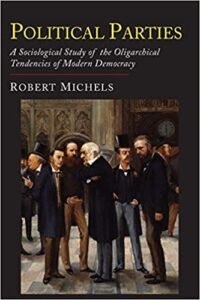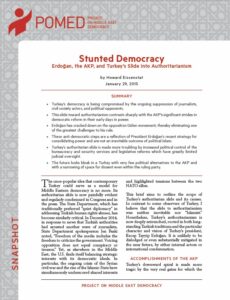The #Biden Administration will need to prioritize democracy assistance to ensure a more secure world for all Americans.
How? @IRIglobal’s @jansurotchak & @patrickwquirk explain in @americanpurpose https://t.co/AbwzngvRoV
— IRI (@IRIglobal) January 14, 2021
Political parties are among the most prevalent forms of political organization and representation throughout the world, and necessary to democratic political competition, according to Patrick Quirk, senior director of the International Republican Institute’s* Center for Global Impact and Jan Surotchak, IRI’s senior director for transatlantic strategy.
But there is no longer a single model of what a party is or should be, in substance or action. In the last ten years alone, from Algeria to Bolivia and all around the world, new types of political organizing have emerged to link citizens to their representatives, they write for American Purpose, proposing a framework of four types of parties in a structure of specific needs that the United States can use to guide its party assistance:
 A Movement-Turned-Party. These parties typically emerge from mass protest movements or from the crystallization of widespread latent dissatisfaction with traditional parties. Such parties can be limited in their internal party-specific organization or their ability to mobilize voters over time. They tend to face the challenge of translating loose networks of actors into a single entity with finite views and proposals and an apparatus for mobilizing voters. Examples include En Marche in France, the National League for Democracy in Burma, and Movimiento Semilla in Guatemala. …
A Movement-Turned-Party. These parties typically emerge from mass protest movements or from the crystallization of widespread latent dissatisfaction with traditional parties. Such parties can be limited in their internal party-specific organization or their ability to mobilize voters over time. They tend to face the challenge of translating loose networks of actors into a single entity with finite views and proposals and an apparatus for mobilizing voters. Examples include En Marche in France, the National League for Democracy in Burma, and Movimiento Semilla in Guatemala. …- Hyper-Responsive Parties. “Hyper-responsive” parties have relatively little capacity for internal organization but are adept at mobilizing finite subsets of the population as voters and rewarding these constituents with patronage or policy prescriptions. They prioritize electoral mobilization capacity over policy implementation, member management, and decision-making capability. Examples include Jamaat-e-Islami in Bangladesh, Podemos in Spain, and Bolsonaro’s Alliance for Brazil….
- “Old Guard” Parties. “Old guard” parties are highly organized and institutionalized, have a robust policy-making apparatus, and tend to have solidified and sharpened their organizational structures—including financial architecture and member mobilization—over the course of decades. Examples include the Social Democratic Party in Germany, the Sri Lanka Freedom Party, the Independent Party in Morocco, and the Institutional Revolutionary Party in Mexico. A party like this can benefit from assistance with reinvigorating voter outreach and expanding its base; developing and applying new forms of measuring and communicating changes in voter sentiment; and rethinking how its existing ideological stances apply to rapidly evolving modern electorates.
 Machines. A “machine party” is well-organized and run with a robust nationwide network of branches and a strong policy-making apparatus that delivers legislation for its parochial electorate. It is responsive to and capable of mobilizing a finite, even if large, section of the population in an election, and it can address the leadership’s perceived need for a show of public strength. Examples include the Bharatiya Janata Party in India, the Justice and Development Party in Turkey (right), and Law and Justice in Poland.
Machines. A “machine party” is well-organized and run with a robust nationwide network of branches and a strong policy-making apparatus that delivers legislation for its parochial electorate. It is responsive to and capable of mobilizing a finite, even if large, section of the population in an election, and it can address the leadership’s perceived need for a show of public strength. Examples include the Bharatiya Janata Party in India, the Justice and Development Party in Turkey (right), and Law and Justice in Poland.
“The Biden Administration will need to calibrate its support of democracy abroad so as to address the threats and exploit opportunities such as the potential promise of digital tools for governance and a recent groundswell of ‘people power’ movements,” Quirk and Surotchak add. “The United States has helped to strengthen nascent political parties abroad since the 1980s, but this is an area in which we need an update.”
*A core institute of the National Endowment for Democracy (NED).







